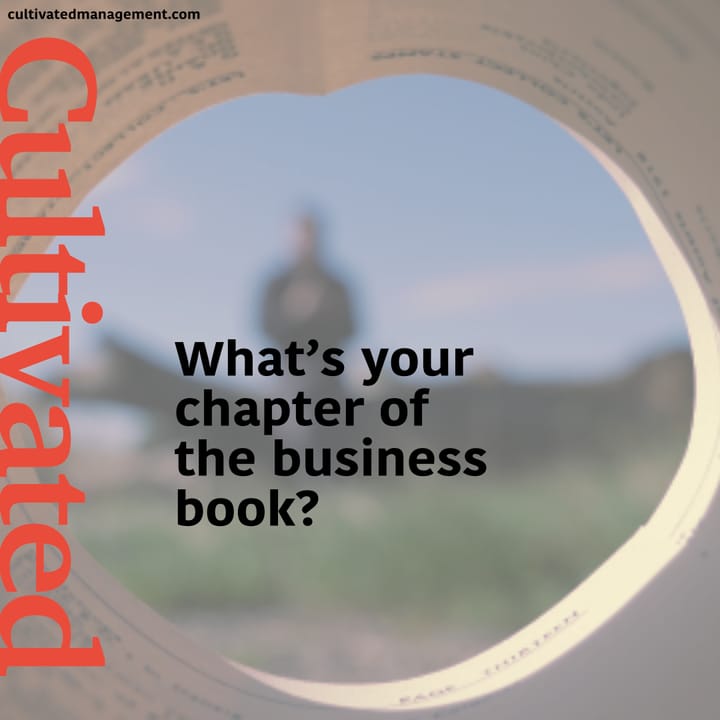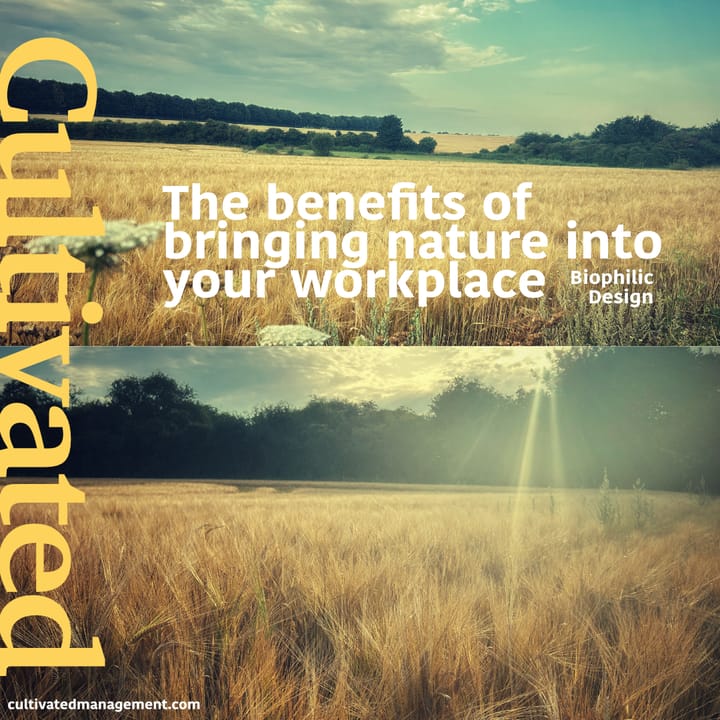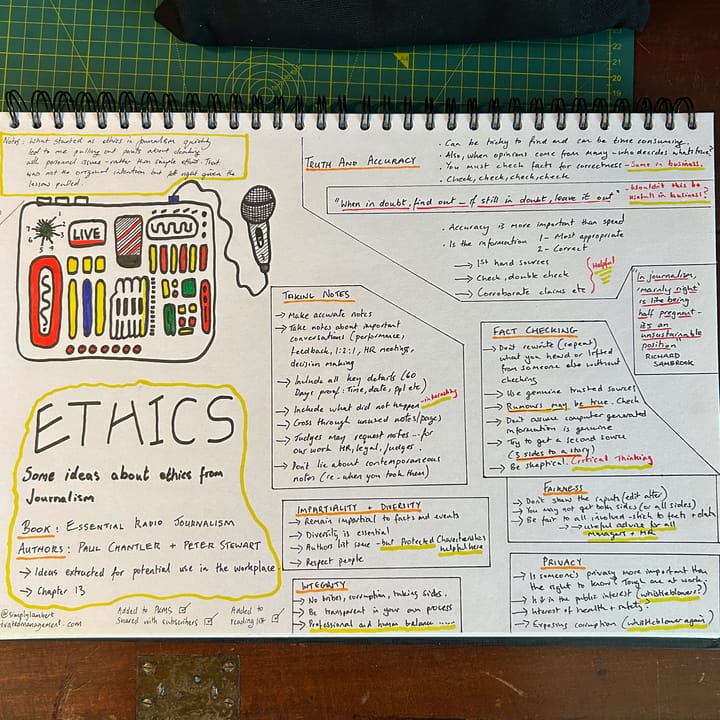Business improvement using Friction Versus Reward - Podcast
In this episode and blog post I talk about the method of Friction v Reward, how it's creator, Richard Hammond, uses it and how I use a similar model for business improvement.
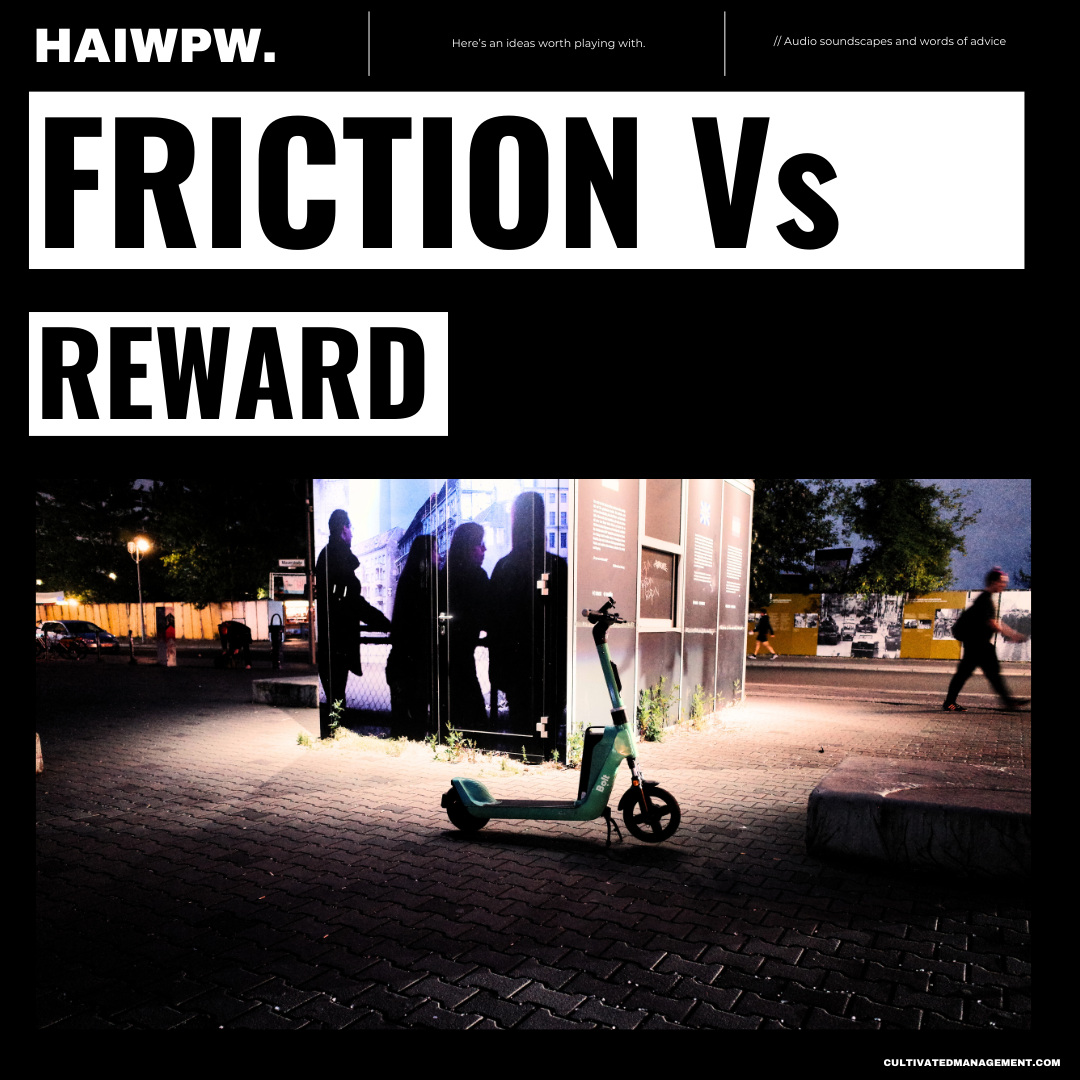
I spend a lot of my time doing business improvement. This could range from ways of working, to Leadership thinking to organisational redesign. And through this work I've relied on a simple way to categorise the many different improvements that could be made.
I've used a method called Resistance Versus Outcome, but more recently, after reading Richard Hammond's excellent book, Friction/Reward, started referring to this as Friction Versus Reward.
In this post:
- Short introduction + Podcast
- Learning Notes
- Transcript of podcast
In this episode of "Here's An Idea Worth Playing With" I talk about the method, the ways I use it and give some real world examples. Critical thinking is essential when using this, as it's not always as simple as removing or reducing friction - check out the podcast to find out why.

I first discovered Richard on LinkedIn about 10 years ago and was always fascinated by his work in the retail space.
His previous book (Smart Retail) is very good too, so when he brought out Friction / Reward, I had to grab a copy. It was well worth the money. I read it a few years back but have only just got around to doing some Learning Notes and chatting it through in the podcast.
As I mention in the podcast, Richard's work is in retail with data and insights coming from the business. His company, Uncrowd, are doing epic things in this space by leading the data informed insights movement.
I have morphed his idea to fit my line of work - business improvement and management coaching. Hope you don't mind Richard!
I even looked up alternative words for Friction and Reward - and guess what - yes, Resistance and Outcomes were there respectively.
I use this method a lot to articulate to teams and leaders why we should embark on improving a particular part of the business. As part of my work there is always a study period - and in that period I often discover 20 + opportunities for improvement - places where friction is high or rewards need addressing.
The quadrant I use therefore also serves as a backlog of work and an audit trail of how we're progressing. I.e. we test regularly and move the circles around.

As with all things related to cultivated management, the key is having good evidence and data around the problems, an understanding of how work moves through the system, clarity over the plan and continuous measures to check we're making a positive difference (usually a combination of qual and quant metrics and data).
You'll need a plan too 😄
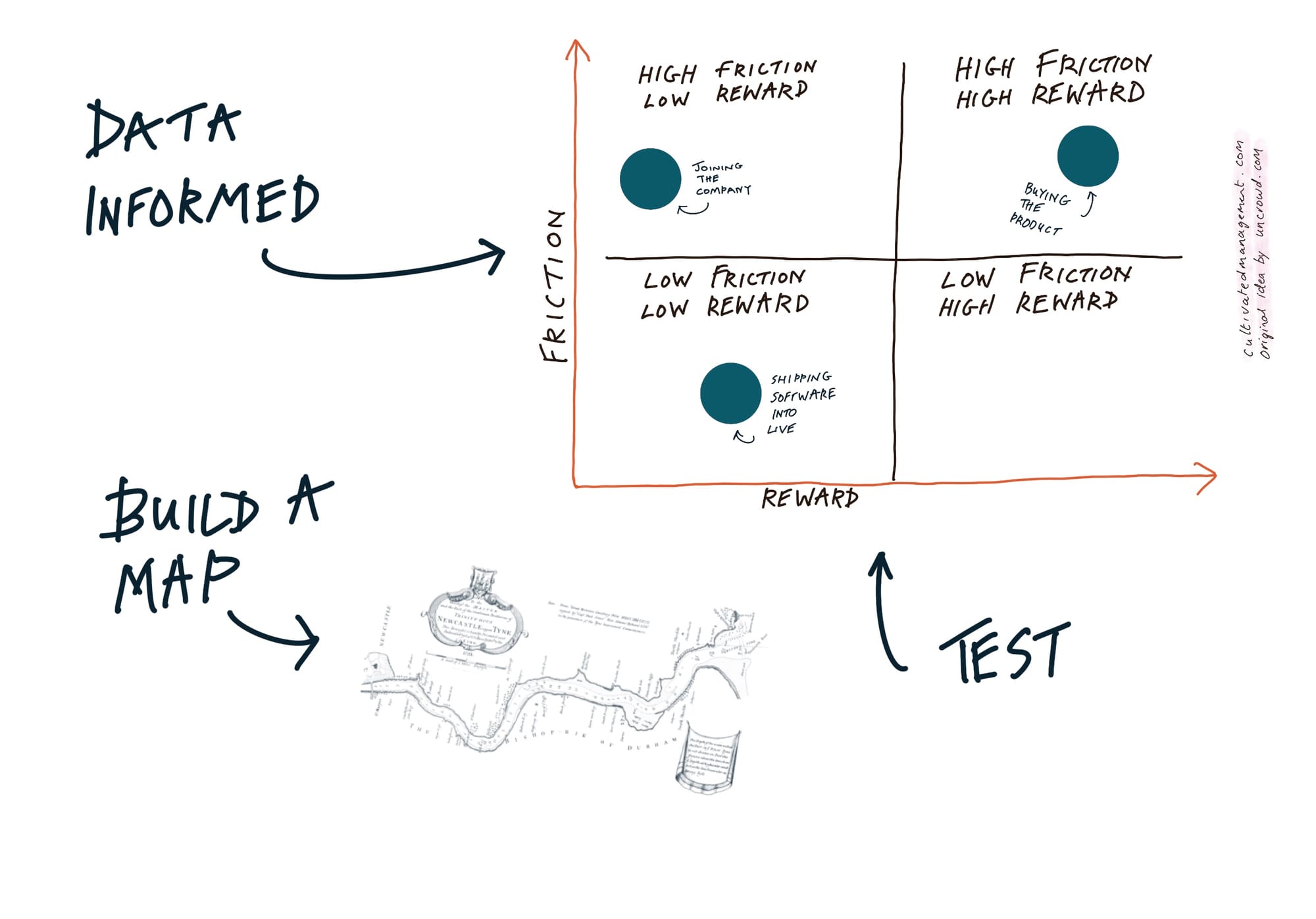
I hope you enjoy the episode. Learning notes and transcript are below.
Learning Notes
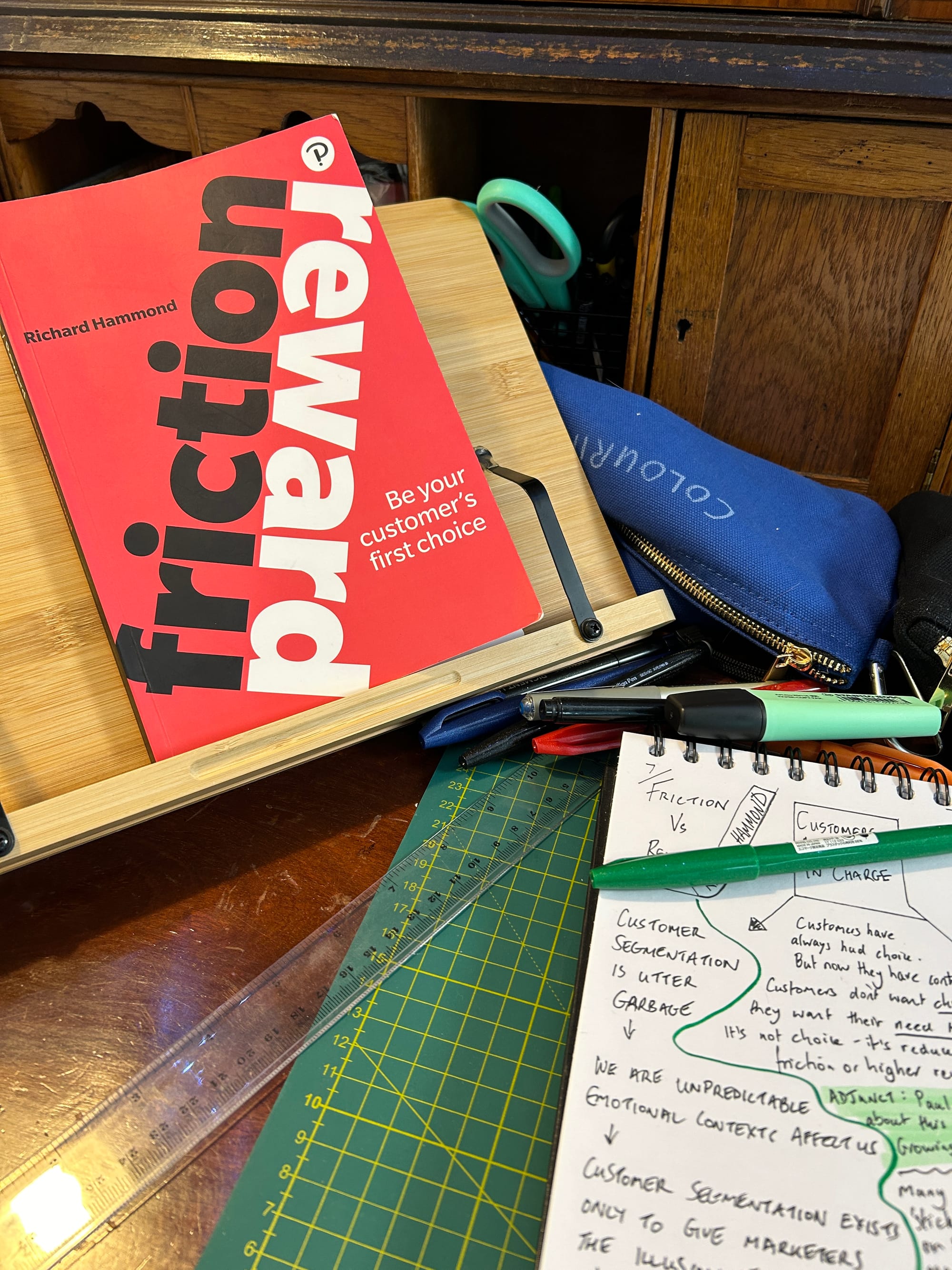
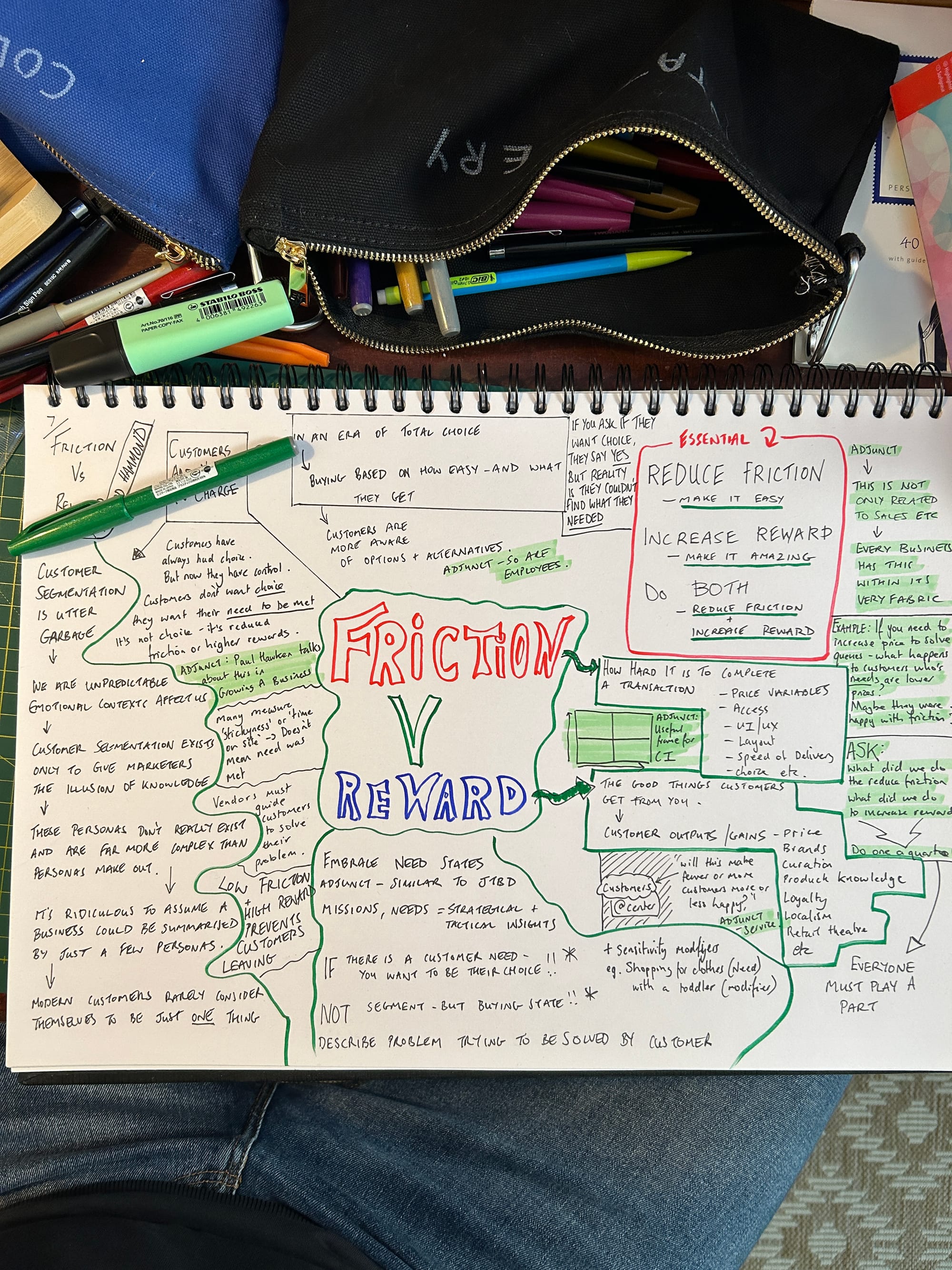
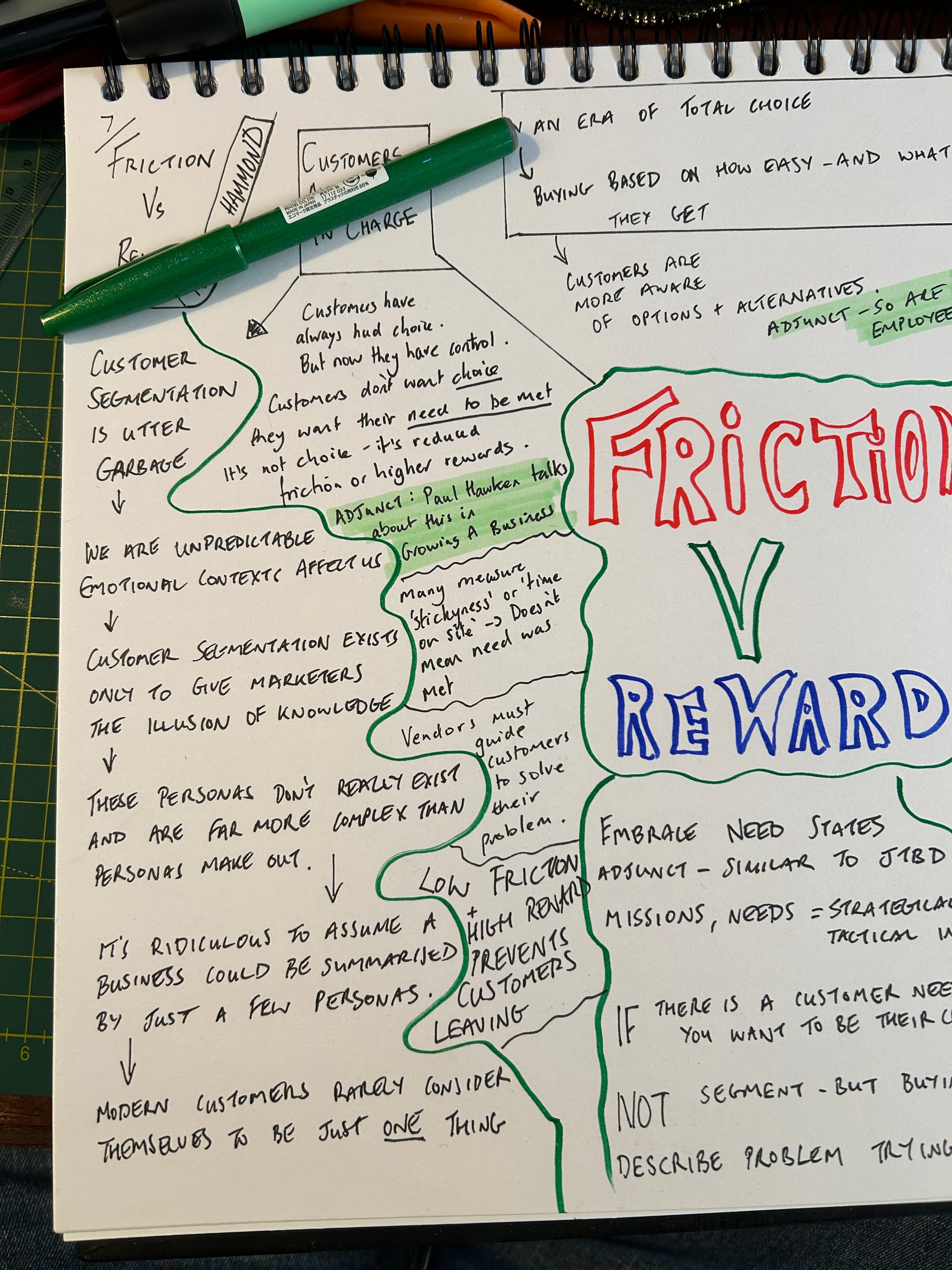
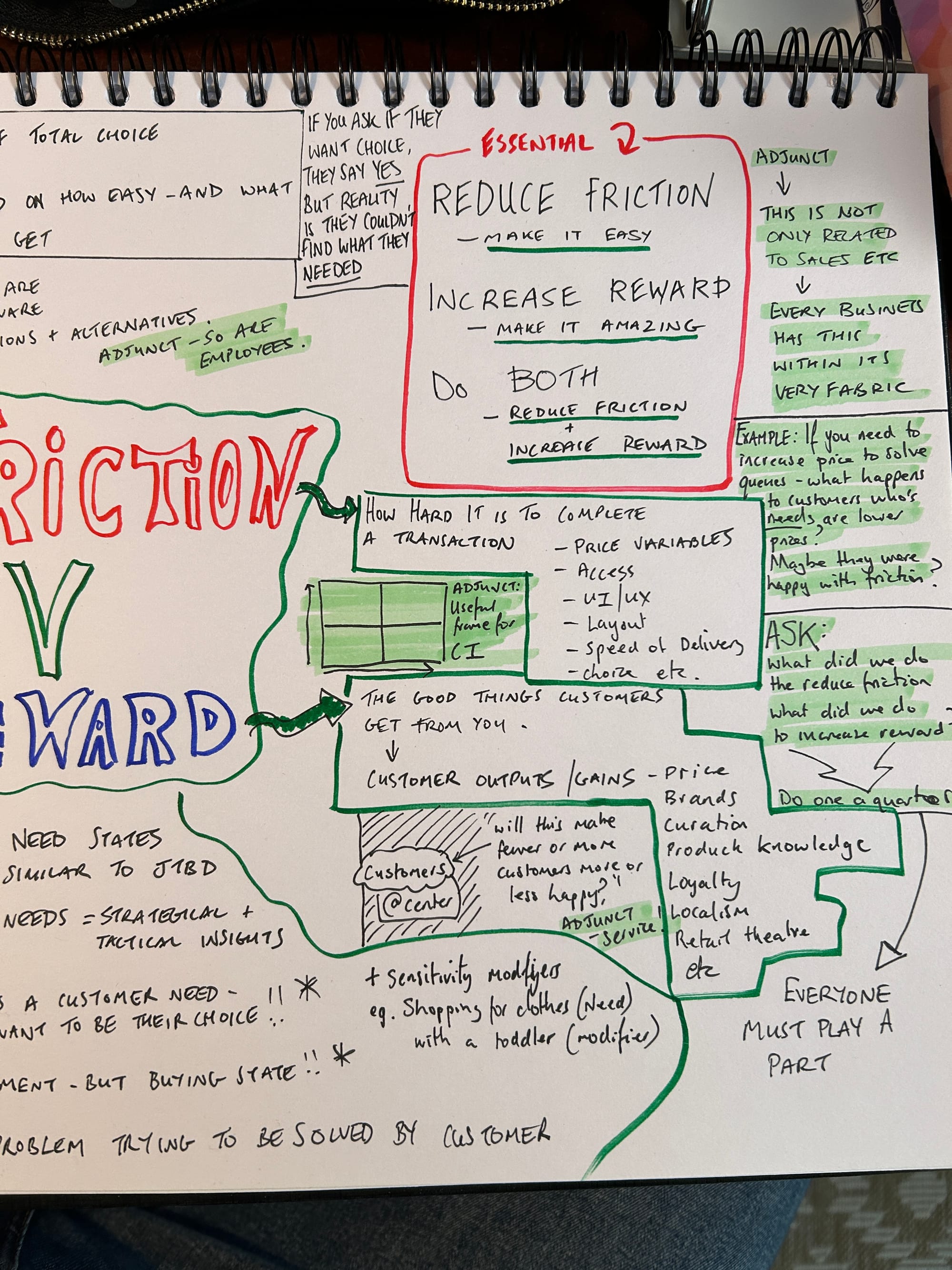
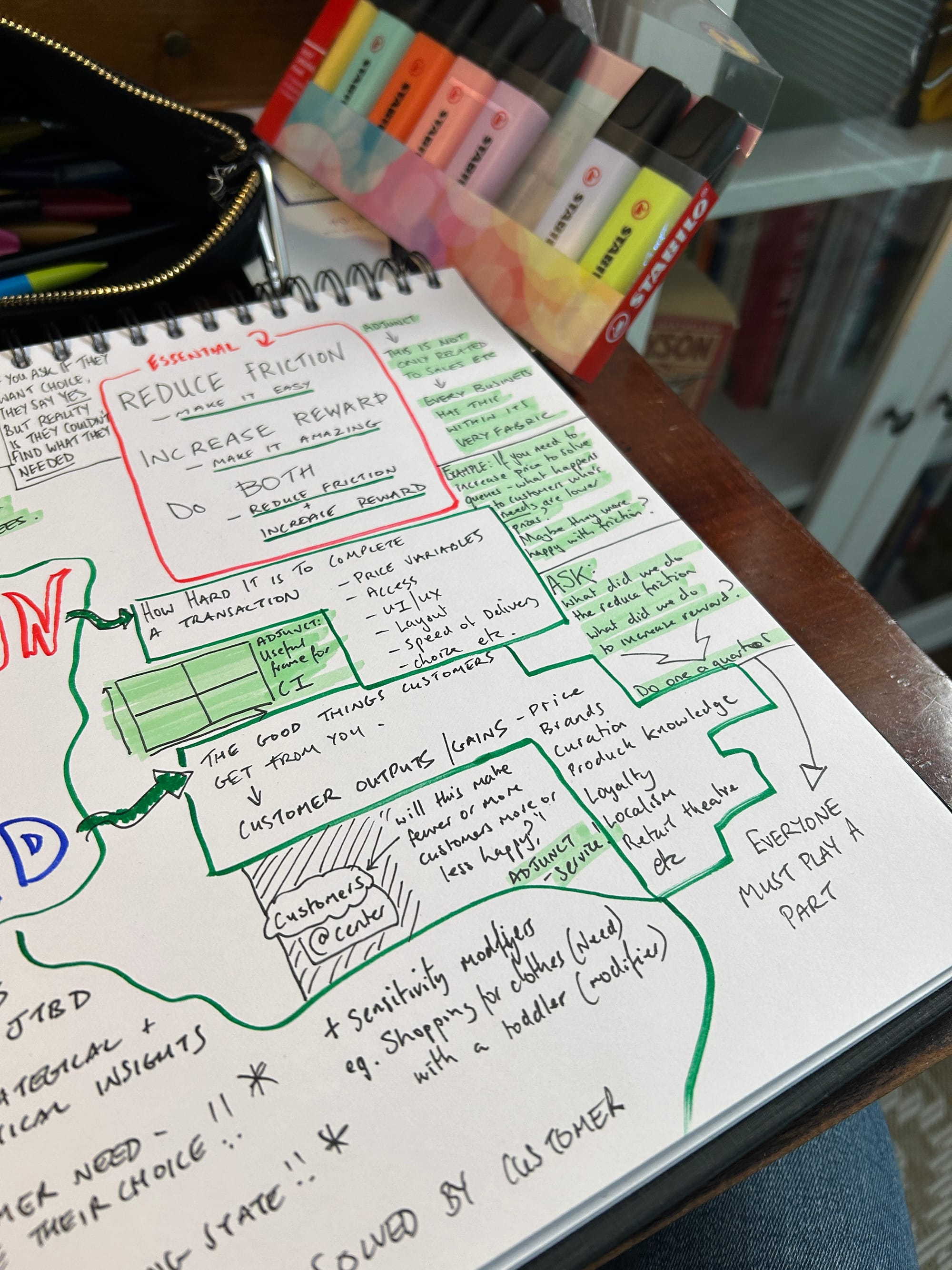
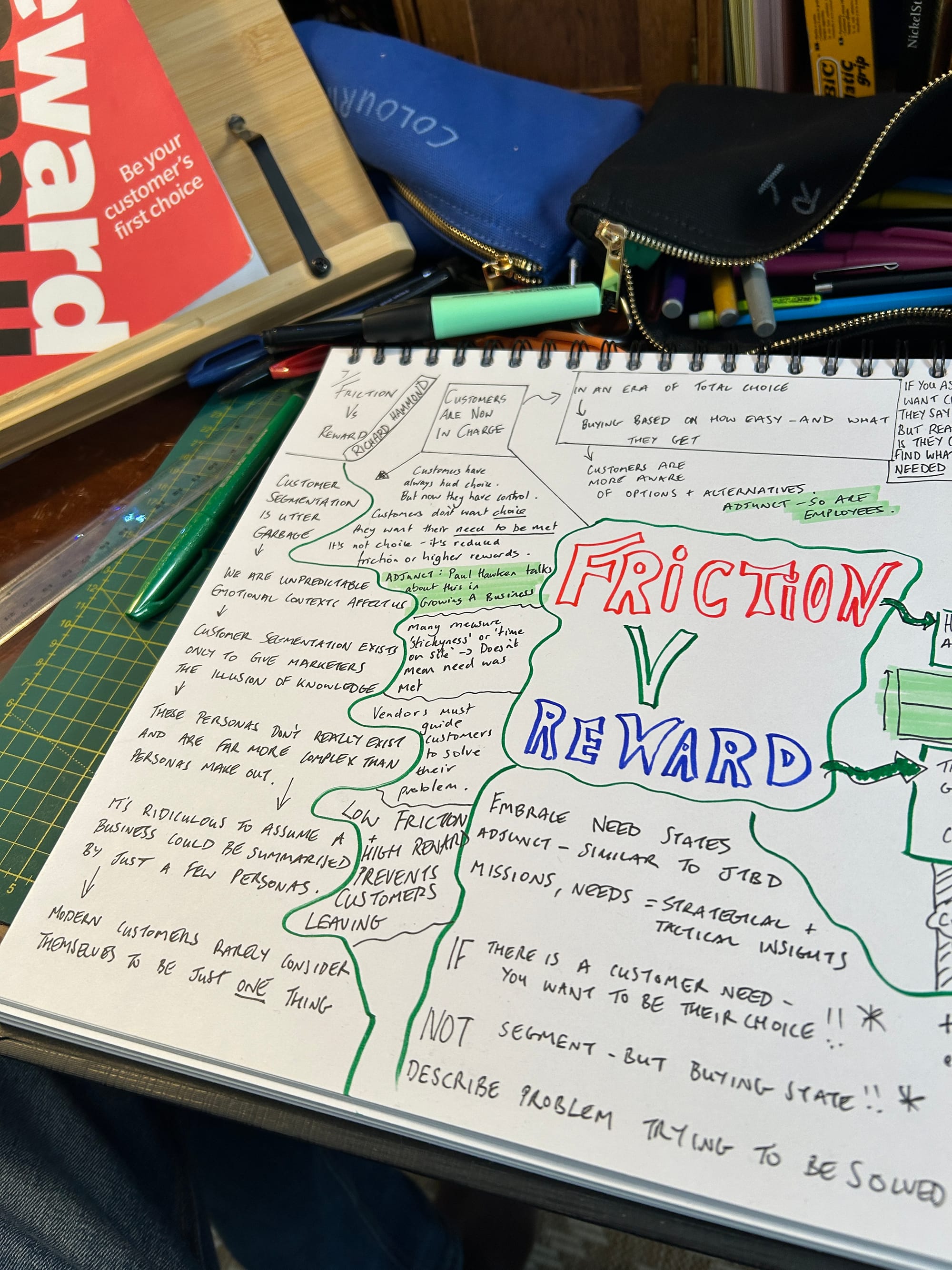
A gallery of my very own learning notes taken from the book.
Transcript
Note: This is AI generated, it may contain spelling mistakes and grammar oddities. I do find it struggles with my Northern accent.
Speaker 1: Everybody. Welcome to another edition of here's an idea with playing with with me, Rob Lambert. Today, I'm gonna be talking about something called friction versus reward. Today's a pretty good day weather wise. We've had some awful weather here in the UK.
I don't know whether you follow me on Instagram. If not, it's at simply Lambert. And we got given a swimming pool, which we put up, about 3 or 4 weeks ago on a very, very nice day. And then we've literally had rain and wind, and it, you know, basically felt like October. And I'm recording this in 17th July.
Yeah. We got given the pool and we haven't used it yet. So the weather's looking like we might get a couple of good days. Anyway, you didn't need to know that. Onto today's topic, friction versus reward.
Now this is kinda something I've been doing for a long time, looking at friction and looking at the reward in terms of how can we make the business better for ourselves, for our business as a whole, for our staff, and ultimately as well for our customers. Now I never used to call it friction versus reward. I used to call it resistance versus outcome. But then I've been following a guy on LinkedIn called Richard Hammond. Not the presenter, the top gear presenter.
No. This is Richard Hammond who runs a company called Uncrowd. You can find him at uncrowd.com. And a few years back, he came up with this this really good book and this really good idea called friction versus reward. The model is really all about retail, and it's about customer insight data and all sorts of clever stuff that retailers and, shopping companies need in order to make sure that they are delivering the right service, the right products, the, you know, reaching the right customers.
So I'm not gonna talk about it from that perspective. I'm gonna talk about it a little bit of a sort of dimensional shift on it and talk about applying this idea of friction versus reward to the company you work in. Now I would encourage you to go and check out uncrowd.com. The book itself is called friction versus reward. It's a really good book.
I definitely recommend you read it. Go and check out Richard Hammond on LinkedIn. He's super entertaining to follow and watch. He's definitely booking the trend when it comes to, you know, this kind of industry. And the maths in the friction versus reward goes way above my head.
I'm not a maths kinda guy, but it all seems to make a lot of sense. But the core essence of this is this idea of friction versus reward, which we'll jump into. Check out the show notes. Check out the transcript. There's some diagrams on the website, cultivatormanagement.com, where you will get the transcript to the podcast.
There's links. There's all sorts of cool stuff for you to, immerse yourself in this idea of friction versus reward. Now like I said, we used to call this resistance versus outcome. And actually, there is a extreme similarities between this friction versus reward and the idea that I always used to run, and I still do, today called resistance versus outcome. I've actually started calling it friction versus reward because, actually, it's a really nice phrase.
Thank you, Richard. What I'll try to do during the podcast is call out where I'm, sort of almost pulling on Richard's work and then talk about stuff that that I've been doing as well. And and this really is a way to help to make the business better as I've mentioned. I'm gonna share some real world examples, and there'll be lots of useful insights. Like I say, check out the associated post where there'll be links and all sorts of cool stuff.
Firstly, right, let's jump into this. What is friction? So friction or resistance, as I used to call it, in work is essentially anything that's preventing you from doing the right thing, doing good work, or it's stopping you getting products out or dealing with customers, you know, think red tape, steer codes that don't steer, you know, poor process, governing boards that don't govern, old technology, lack of cooperation, poor communication, misaligned goals, poor behavior, you name it. There are 100 and 100 and thousands of different potential friction points. It's anything that's slowing you down or stopping you from doing what you need to do in order to, serve value to your customers and your employees.
Now when we think about reward, I tend to think about this or I call it outcomes, but let's talk about reward. I tend to think about it in 3 different ways. And the first one is rewards for your customers. You know, maybe they get their issues dealt with in the first time or in a speedy manner. Maybe they get their products on time.
Maybe it's super cool, easy, and slick to become a customer, and it's actually good to be a customer. We often hear in a world of work, and I see this all the time, we hear customers say it's easy to become a customer. It's really difficult being a customer. You know, you don't quite get the service. You don't get issues resolved.
You don't get insights or, you know, pre wires or communication about new products. You don't get discounts, all that kind of good stuff. So this really is rewards for your customer. Secondly, I think about it in terms of rewards for staff. You know, maybe they're no longer banging their head against the wall, which is an absolute positive reward outcome for dealing with a lot of the friction that we're gonna talk about in this episode.
Maybe they get rewarded in their career or their perks or their benefits, or simply feeling like they belong to a team is often, you know, a reward that a lot of people might be missing. And then, of course, thirdly, I think about rewards for the business overall. So this is like improved business results. You have better retention of good staff, and I always add the word good staff there. You know, easier to recruit, you know, just doing well in the market.
This is obviously a very clear reward for a business, which is what we're all ultimately trying to do is to ensure that the business stays alive and keeps being able to do what it's supposed to do. So there are really three things that you can do with friction and reward. And here, I'm gonna lean on, what Richard talks about in the book. These are the 3 sort of ideas. But before you sort of, like you hear these and you jump into wanting to reduce friction, which is really one of the main goals, there's some caveats and some critical thinking and some insights that we need to lean into, which we'll talk about later.
So the first thing is you can obviously reduce friction, I e, you make it easier to get things done or easier for customers to get products or easier to ship software into live, whatever it is that you're doing in your work. You reduce that friction, meaning that it's much easier to get things done. Secondly, you can increase the reward. You know, you can make the service better. You can make the business better.
You can make the outcomes better. You can increase the perks. You can, you know, give more value to your customers than other people do. And, you know, sometimes this is a good strategy. You know, we're not reducing friction here.
It might still be painful to get things done, but the reward is worth it. It's worth going through that. And then thirdly, you do both. You reduce the friction and you increase the reward. I mean, that's a sweet spot to be in.
The key thing here is that actually sometimes, and and, you know, Richard uses the example of Amazon, and I've always used Amazon as a great example of a company that reduces the friction it takes to buy something, and the reward is good. You get the product the following day if you're a Prime member. It's super easy to part with your money in a sense, and it's a really good example of reducing friction and increasing the reward. Equally, there are some shops that I go to and some businesses that I frequent where the friction's quite high, but it's worth it because the reward is absolutely worth it on the other side. Okay?
And then there are some companies where the friction's high and the reward isn't worth it. And frankly, we don't tend to use those companies or work in those organizations either. So Richard uses an example, in the book. It's a really good one about a low price supermarket here in the UK. It has long queues.
And those queues I mean, I shop there occasionally, and the queues are huge. It's ridiculous. The friction is very, very high. But it's the reward of the low prices that means that you're willing to suffer through that friction. And he uses the example, if you were literally just to think about reducing friction, which is what most people go to, you could spend a bit more money, hire a few more staff, and reduce the friction of standing in the queue.
But in order to compensate for that, you might have to the prices up and therefore the reward goes down. So we have to apply this sort of critical lens about what is it that really matters to us and to our customers and our staff and the business? That's that kind of critical thinking that you really need to think about. And in my line of work, I help companies, get smoother and quicker towards business results. So my world is pretty much all revolved around reducing friction and increasing rewards.
And every company has friction points. The goal is to find them and consider the consequences of reducing that friction. Is the reward worth it? Do we need to reduce this friction? Now I've always used a a kind of, quadrant.
I don't know whether I saw this in Richard's book. I'd have to double check and stick it in the show notes. But essentially, it's a quadrant. Yeah. A typical classical quadrant.
You got 4 boxes. And I think about friction up the left hand side from low to high and then reward running along, horizontally from left to right and that's the the reward. Up in the top, left corner, you've obviously got high friction because it's up at the top, and you've got low reward. So when you're thinking about, you know, improving anything or thinking about getting stuff out to your customers and you're thinking about how hard this is to do, it's often worth thinking about where that particular thing that you're leaning into is on this friction reward chart. And we'll cover a few examples in a minute.
So bottom left hand side, you've got low friction, low reward. So it's easy to get stuff done. It's easy to buy the product. But the reward isn't great, you know, there's not really much in it. You've got the top right hand side, which is high friction and high reward.
And we've used the example of a low cost supermarket. It's quite painful. They don't do home delivery. You have to go to the store. You have to stand in the queue.
It's often very, very busy, but the reward is worth it because you're getting food or or grocery goods at a much lower price. So the reward is worth the friction. That is something that might sit in that top right quadrant. And then when we drop to the bottom right, which is really, I think, the kinda sweet spot that we're sort of aiming for certainly within the world of work improving businesses is you've got low friction and you've got high reward. Now let's bring this to life.
When I was part of a team, we were recruiting a 100% year on year. Literally, we were growing and scaling a startup and it was mad crazy busy, interviewing 100 and 100 of people each month. We were facing a whole load of friction. It was extremely difficult to get the job adverts out there, to get people through the HR process, to do the interviews, and then to obviously move into the decision part of that process. And it took anywhere between sort of, I'd say about 2 to 3 months to get people into the organization.
Just wasn't good enough. Now, of course, we could shortcut that quality process and hire fast, but that's not a principle that we wanted. So we needed to lean into this friction. Now we plotted this on an early version of this before I call it friction reward. It was resistance versus outcome.
So what was the resistance? And, you know, when we plotted this, we put this very, very, very much at the top left hand side. It was high resistance, high friction, and it was very low reward. Nobody enjoyed the process. We lost loads of candidates who were frankly teased over to another company that had a much slicker recruitment process.
We looked at this and we came up with a plan. We wanted to move from that top left, that, high friction, low reward down to the bottom right, which was low friction, high reward for us, for our potential employees and obviously for the business. So we came up with a plan. We studied it. We understood it.
We stapled ourselves to it. And if you're a follower of the Cultivator Management blog, you'll know that I've got a blog post on there called stapling yourself to work, and that's a a way of explaining how we basically follow work as it moves through the system, through the business. We staple ourselves to it. We understand how long things take and then we get a a nice clear picture on how to improve the business. And we moved them eventually, you know, overcoming various problems with HR, the recruitment process.
We went down from that sort of 2 to 3 months down to have been a 2 week process from first contact to a decision. That was a couple of months of the work, a lot of focus, a lot of energy and attention directed to it, but we moved from that top left quadrant down to the bottom right. We reduced the friction and we increased the reward. That was a really good example of this in action. Another example, that same company, we were releasing software every 18 months, which was just way too slow for the market.
We were getting outpaced. As you can imagine, the market was destroying us. We absolutely needed to release more often to basically keep the business alive. So we were there very much at the top left again. We had high friction in getting this software into production.
We couldn't deploy it quickly. We couldn't build it quickly. We couldn't test it quickly. We couldn't even elicit requirements quickly. I mean, the whole process was just slow and tedious and drawn out.
And there's very little reward because, frankly, you'd wait 18 months to see what that reward was. By which point the market moved on, customers no longer wanted those features, and we were just playing catch up all the time. So, again, we embarked on basically several initiatives over the course of about a year and a half it took to move us from that top left to the bottom right till we got to the point where we were able to ship software every single week, low friction, high reward. And many people say, well, why stop there? Why not just keep going in this example for releasing software every single day?
You know, keep going. Keep removing that friction and keep increasing that reward. But we done. The customers didn't need the software any more frequently than that. We didn't need to keep going.
There was no point at that, at that point in time in reducing friction and increasing the reward. The just other things to do, more important things to move from that top left down to that bottom right. And then one more example to bring this to life. When I was working, consulting with a customer support team, a huge customer support team, massive organization, they had a very, very drawn out customer support process. You know, customer raised an issue about the software or the service.
It took anywhere between sort of 2 to 3 weeks before that customer got that issue resolved or sometimes even heard back from the company. Now when we did the same stapler and exercise, it was very clear that it was a very, very high friction process, not only for the customers, but also for the staff internally. They had to produce all sorts of reports. There was a report I'll tell you this story. There was a report that was generated at 3 o'clock every Wednesday afternoon, and the goal of that was for managers to be able to go and hit people with a stick to to ask them, you know, why have you got so many cases in your queue?
So what the teams did to avoid getting hit with that stick at 3 o'clock every Wednesday was they created all sorts of different parts of that queue. They split it out, often between individuals, often between sort of different parts of that service function. There was about 25 different stages that this customer case, a customer who has an issue, who wants it resolved, who has this friction, and they want a resolution to it. And it just went through 25 different stages before it even got anywhere close to being resolved, and they did that to avoid getting hit with a stick. So 3 o'clock every Wednesday, everybody would be moving cases around all over the place so they weren't in their queue, and some unlucky person would end up with most of them in their queue that didn't belong there, and they were doing it just to avoid getting told off.
And so that is a case where the business itself has created this inner turmoil, this inner friction to satisfy a management report somewhere rather than looking at this and going, well, how can we reduce the friction? How can we increase the reward? So we did a huge amount of work, streamlined that down to about 5 different stages of that queue process, implemented where possible first time call resolution. So somebody would call in and the friction was there. Obviously, they got an issue, but the friction of getting it dealt with was very minimal.
And the reward was great. They got their cases resolved in something like 80% of the time, first call resolution, which is what you're after. Internally, the employee satisfaction went through the roof and, you know, the staff actually started to enjoy dealing with customers because the process was slick. We'd increased the reward. They felt empowered.
They had autonomy to make decisions. It was very, very clear where things were. There were no blame culture. No more 3 o'clock reports on a Wednesday. We'd increase the reward and we'd reduce the friction.
They were now coming together as a team instead of handing stuff off to each other. So if we hadn't plotted that on that kind of, resistance versus outcome or friction versus reward, we would obviously know it's a problem, but we've now got this simple framework to start putting things into those boxes. And the key thing here is you absolutely need data. You've got to get those insights and that data to tell you whether this is a friction problem, whether or not it's internal politics. You know, what is it?
Stapling yourself to work is obviously a great idea. Check out the blog for an article on that. But, essentially, almost every problem that we encounter in a workplace can be plotted on that friction versus reward model that Richard so carefully curated, and I have morphed and twisted to suit my own needs at the moment. But let's look at a few key elements here. So not all friction is bad.
So we talked about that with the low cost supermarket. Not all friction is bad. It may feel bad, and actually if you could get rid of it without increasing or decreasing costs or whatever the outcome is, then obviously you would do that. But sometimes, in order to decrease the friction, we have to play around with the rewards, and we've got to really try and understand that. And whether it's worth it, whether this really is a problem that needs to be solved.
And almost every problem, like I've said, in a business can be put into this model, and I use it all the time. Almost everything in a business can be put into this model. And the key thing is, like I say, you get that data, you get the insights, and then you come up with a plan, a map, a sort of strategy on how you're gonna deal with it. And then you test it. Are we reducing the friction and increasing the reward?
Or are we increasing the reward but keeping the friction the same? Or are we, you know, decreasing the friction but leaving the reward the same? These are all things that you've got to think through in that sort of the analysis stage. Where is it on the quadrant? What do we need to do?
You know, what's the data telling us? And then put together a plan and then test it. Have you resolved the problem? Really, what we're looking at here is, what problem are we trying to solve? How do we know it's a problem?
Is it a problem worth solving? And then there's a plan, and then there's a testing phase to understand whether or not you have indeed solved the problem. I'll add a little addition there. We often create other problems when we solve problems. So have a think about the consequences of reducing that friction and increasing that reward.
I think as Richard points out in the book, that reducing friction only makes sense if there is a reward at the end of it. And I see this in business all the time. There are people following processes, doing work that has no reward to it at all. And people are spending their time optimizing and solving those shiny, interesting, fun problems that come with this nonsensical work and then declaring victory on solving it, but there's no reward at the end of it. This is a classic case where we've got lots and lots of work going on in organization that probably shouldn't even be done in the first place.
So there's no point reducing friction if there's no reward at the end of it. A key point running through Richard's book is this idea that it's so easy nowadays to switch suppliers, and I absolutely totally agree. When we're in the start up, it was super easy for a customer to say, no. Thank you. The friction's too high working with you guys.
I'm gonna go off to a supplier who can provide a better service. And they can switch easily. And as consumers, we can switch easily. And as employees, it's actually pretty straightforward to move jobs assuming that there are obviously roles available for you in the industry and the location that you need. We don't have employees who stay with companies for 20, 30 years anymore.
That's not really a a sort of thing for the next generation. It's a series of experiments and experiences and meaning that they're trying to get from work. So if we wanna keep the best staff, we've got to reduce the friction and increase the reward and make it a a good, fun, interesting place, a place that enriches the lives of all who work in it. That's one of the core principles and ethos of Cultivator Management is we're here to obviously keep the business alive and keep making money, but we have to make it a place that enriches the lives of the people that work there, and they have choice. When I told you the example about recruiting, you're recruiting and it's taking 2 to 3 months, those candidates have choices.
They can go to another company. So we've always got to be thinking there that people will not stick around if there is no reward for them or the friction is too high. Now Richard takes a step further. It's not really about choice in some respects. It's about control.
They have control, and that's a really key part of that. We've always had choices, and we've always been able, I guess, in some respects to switch jobs or switch suppliers. It's become easier. There's no doubt about that. But we also have control now, and that control is shifting into the hands of the people who are trying to attract us customers or trying to keep as staff.
And we've gotta really be cognisant of that and have a look at this, you know, idea of really, in a sense, getting rid of all the bullshit that stands before somebody in work trying to do their job and trying to do the good thing and get the right outcomes. And usually when we find these different friction points, of which there are 100, you know, even things like getting your expenses raised, you know, working with colleagues, misaligned goals, poor comms, all of this kind of stuff. When we identify all these 100 of 100 of things that we can solve, we always hear back from the staff that, thank god for that. You've got rid of all the the crap that I've been telling you about for years. And so there's a lesson there, really.
If you're a leader and manager, listen to your staff because, what they're telling you is a friction for them. It's something that you probably should be focusing on. So it goes without saying that in some organizations, it's extremely difficult to reduce the friction. Now a lot of the friction in particularly large organizations comes from what we would call systemic issues, issues and problems and friction that go across functional boundaries. You know, maybe it's part of a finance process that's really difficult to get through, but in order to do so, you need to align with 5 different other functions in order to put value case together to release that money.
You know, this is a cross systemic issue, and they're very, very difficult to solve because, firstly, the data often doesn't exist. So actually gathering that data, that insight, is really tough to work out where this friction point is and what the data's telling us about it. That's difficult because you're having to jump across functions. Not everybody's gonna be involved. You know, people you need to speak to won't even heard of you or heard of your team.
It's a very, very difficult process. And it's difficult as well because of politics. And sometimes problems lie in 1 or 2 of those different functions, and therefore, you're shining a light on it. People get defensive. People you know, there's not a lot of humility sometimes in business to go, actually, that is a problem.
Help me solve it. So these sort of friction points in organizations are extremely difficult to solve, but that doesn't mean that we can't do the analysis. We can't point it and say, look. Here's what the data's telling us. The friction's high.
The reward is low or high or whatever the reward is. We need to come together to try and address this friction, to solve it, to move it from that top left where it's high friction, low reward, and move it to another part of the quadrant. So that's where that analysis and that data is really important. Then if you do get buy in and you get support for it, you need to have a plan and a map, as I would call it, on how you're gonna deliver it and then testing that all the way through that process. Now a good question that Richard asked in the book, will this change make fewer or more customers happier?
Now I've had the word staff in there. You know, will this change that we're gonna make in order to potentially reduce friction or increase reward, will this change make fewer or more customers, staff, happier? I like the way that he's phrased that because he's not said, will it make all customers happy or all staff happy? I've added the staff bit, by the way. Because when we do these sorts of changes, what we often find is you will never satisfy everybody.
Not everybody's going to be on board with these things. So I like the way that he's phrased it. You know? Will this change make fewer or more customers, staff happier? So it's one question to ask as you go about this.
You know? Are we gonna make everybody super deeply unhappy with this change? Then maybe the reward is something we need to look at. Actually, we've reduced friction, but actually the reward is that, well, there's none there. Everybody hates us.
Everybody doesn't enjoy working in the organization anymore. So you need to start thinking critically and asking some very difficult questions. You know? Will it work? Will it reduce friction?
Will it increase reward? Will it make people unhappy or happy? And you're never gonna satisfy everybody. So that's just something to bear in mind as you embark on any kind of process improvement or business improvement plan. Now, again, a key thing that Richard calls out in the book is that if you're gonna be using his friction versus reward with the analysis and the data and the retail lens on it, everybody in the organization needs to know how to think in this way.
Absolutely love that because when we embark on business improvement, you're talking to people and working with people who have been banging their head against the friction for a number of years. Maybe it's so hard to actually get great customer service done because of the internal politics and bureaucracy, or the processes just aren't there where there's some old technology that's really stopping you from getting stuff done. And people have been banging their heads against it for a while but have not resolved it. They've not worked out how to solve it. They've not worked how to frame it in a way that makes sense.
We find this a lot. It's almost like there's no time to improve. There's no time to get better or why would anyone listen to me or the worst case is when you get apathy. That's just the way it is. We just deal with it.
You know, that's really, really bad. And one of the ways that we start to do that is to get people to start thinking about it in terms of, you know, resistance versus outcomes, which is my phrase, or friction versus reward. What is the friction? What's stopping you doing a good job? What's preventing us delivering better value to our customers?
What are these friction points? What are the rewards? And what have you gathered, observed, studied, understood? And getting people to think in this way actually really rejuvenates an organization where people are are not satisfied anymore with high friction points and low reward. They start looking at the world differently and going, this isn't right.
We've got to do something to make this better. And it's a really good point in the book that if you're gonna use these kind of tools in his model or you're gonna use some sort of business improvement sort of methodology or or framework, You've got to start trying to get people to think in that way naturally so that it's not just a, oh, here's a big problem. Let's go and get that friction reward tool. It's actually ingrained in the way they think. It's actually, this is really difficult.
Could we do something to improve this? Now Richard has a whole section about customer personas and how he's not a big fan of them. I totally agree. I've really struggled with this. But, obviously, in the workplace, we sometimes meet, HR teams that have employee personas.
And And his view is that you're starting from the wrong place because we are always far more complex and multidimensional than the persona that we create. And you may work in a company where you have customer personas. You know, Bob is 42, does this, lives here, has 2 dogs, etcetera, etcetera. But it's a bit of an illusion of insight and control, as Richard calls it, because the reality is we are all, and this is Richard's phrase, annoyingly unpredictable. And I see this all the time.
We've got persona insights into personas of people within the business. There's, you know, Tanya who works in finance, thinks this way and eats, you know, spaghetti for tea. These are completely pointless. They're absolutely useless at making decisions or giving us insights or building the kind of company where Tanya's gonna thrive. Now one thing I always say is the best persona insights is purely from managers and leaders getting to know their staff, actually truly deeply understanding and getting to know the people that they are looking after that's under their care.
And then you can start to feed that back up through the organisation and tailor the right internal processes, politics, rewards, HR kind of stuff for the real people you've got in your organization, not just some made up persona that satisfies a tick box somewhere, but I've you know, gives you no insight whatsoever. Now Richard jumps into this idea of need states, which, for me, I found that chapter particularly interesting. Really enjoyed that particular chapter. And needs stays so very similar to what we would talk about in business world called jobs to be done, or as I call it, what problem are customers or people trying to solve. Because once we know that, we can then design product systems, incentives, rewards, etcetera, to be in line with that, to help people overcome problems.
Now he talks about this thing called a modifier, and these are things that may affect the need state. So let's bring that to life. In Richard's example, he uses somebody who is shopping for summer clothes. Now that is a need state. They're shopping for summer clothes.
So that's quite clear. There's a need there. They need some clothes for their summer holiday or or whatever. One that I use is, phoning customer support to get an issue resolved. That's a need state.
There's a need there. There's a problem they're trying to solve. There's something they're trying to do. There's a job to be done. They're shopping for summer clothes.
They're phoning customer support to get an issue resolved. They're need states. And Richard talks about modifiers, and this is super interesting. And I haven't got time to do this justice, and I think I'm gonna go away and maybe do a little bit more research and digging into this from you know, almost like a business improvement perspective. But let's say you take that need state of shopping for summer clothes and you add a modifier to it.
So now that person is shopping for summer clothes with a screaming toddler. Wow. Well, that sort of changes the need state a little bit, doesn't it? It's modified by that screaming toddler. Now let's think about the finding customer support need case.
Well, maybe they're finding customer support to get an issue resolved, but right now their business is completely unable to operate or do anything and they're losing money left, right, and center. That's a modifier. They don't just need it resolved. They need it resolved now and they need to speak to their account manager or something. You know?
There's a need state, and it's been modified. This is super interesting chapter. I'd really encourage you to go and buy the book Friction versus Reward by Richard Hammond. Dig into it. There's a big section on maths, which I just basically skipped straight over because it made no sense to me whatsoever.
But I understand the reasoning behind it and the logic is you're trying to get to a point where you're being driven or at least informed by the data that's coming from the business itself. And that's exactly what we do when we're doing, business improvement through Cultivator Management is we're looking at what is the data telling us? You know, what problems are people facing? What friction is in the business? What are the rewards?
And what are people trying to do? What's the job to be done? What problem are they trying to solve and overcome? And what are those things that are affecting them? You know, you might say that somebody's on customer support trying to deal with a customer issue, but they've got a manager or a leader that's constantly micromanaging them.
Well, that's a need state and a modifier. And these are things we can start to look at and we can start to tease out ideas on how to make the business better. So there you go. That's been a bit of a whirlwind tour of friction versus reward. Now if you go to the website, cultivatormanagement.com, and you check out the show notes, there'll be a transcript of this particular podcast, as well as some diagrams that are sort of bringing this to life.
And I might also include a couple more examples in there. But the idea here is to think about, maybe from a customer lens, maybe from an employee lens, and maybe even from a business lens, what friction are people facing when they're trying to get to a reward? And is that friction worth it? Because sometimes it might be. You know?
It might not be a good use of company resources, energy, time, people, and money in order to go and reduce some friction somewhere when actually that friction isn't causing a problem because the rewards are so high that people are willing to go through the friction in order to get the reward? Or are they going through the friction and there's no reward? In which case, there's a a huge potential there to reduce that friction, increase the reward. Or is it low friction, low reward, and maybe you don't even need to bother with it? But if that particular thing is crucial to your business, you probably need to be increasing that reward in that exam example.
That quadrant really helps. And, you know, in the show notes, I'll include even more examples I've got on, the examples I've got in front of me. I've been sort of sketching a few of these out, is, for example, I talked about the recruitment process. When we first did that, I talked about how it was high friction, very, very difficult to, apply for a job as a as an employee, a prospective employee, Very, very difficult as a manager to understand, you know, where the job adverts are, who's applying, where the CVs. And the reward just simply wasn't there.
You know? At the time, we didn't have a great reward system in the organization. We didn't have very clear mission statements and all that kind of good stuff. And so it was a very high friction, very low reward environment at that point. So we did huge amount of work, reduced that friction, increased that reward, you know, better pay, better perks, great culture, really, really clear mission statement after, you know, growth.
We're all gonna go through this journey and learn and become way better at the back end of this. That's a great reward for anybody who's looking for a meaningful career. We talked about shipping software into live. That was in my example on the the diagram, it was low friction, low reward. But as I talked about it, it was actually high friction, so I'll move that.
And then over on the other side, we've got buying the product, which in one company I worked in was extremely high friction, but the rewards were worth it because the product was great. It was brilliant. It was absolutely awesome, and it solved a huge amount of problems for customers. But it was very, very painful getting on board that particular, platform. So what did we do?
We reduced the friction for customers get on board, and we maintained that high reward, and the company did extremely well. So anything that you're facing in business, any problems that you've got, any challenges that are stopping you from doing good work, you know, bringing your skills to the forefront of the business, onboarding customers. Maybe you're losing customers. Maybe you are gaining lots of customers, but then losing them straight away. There's a big problem there.
Same with employees, same with anything that you're trying to do. Maybe it's really hard to get stuff into production, into live. It's really hard to run that marketing campaign because you've got crappy technology. All of these can be pitched on this quadrant of friction versus reward. So high friction, high reward, low friction, low reward, and a sort of mishmash of that.
And remember Richard's advice from the book, which is great, is there's only really 3 things you wanna be doing here. 1 is you wanna be decreasing the friction, lowering the friction, increasing the reward, or doing both. Definitely check out Richard Harmon on LinkedIn. Uncrowd.com is the name of the website. The book is called friction versus reward.
It's brilliant. You know, I call it resistance versus outcome, but it's exactly pretty much the same principle. Richard's work is all about retail and numbers and sales and all that other good stuff that comes with that line of business. Mine is all about business improvement. Huge amount of synergies.
Really enjoyed that book. In, the show notes, all the links, but also my learning notes from the book, I've been doing these a three learning notes. I don't know if you've seen those on the website, where I include my own personal learning notes that I've taken from books. And on the friction versus reward, it's very, very full. I actually ran out of room on a 3 sheet of paper, so it's squeezed in all over the place.
Might be a bit tricky to read, but the clarity of the images is is great. So you should be able to zoom in and and see what I pulled from the book. Now I'm always intrigued by these learning notes. If you read this book and you create your own learning notes, drop them over to me. I'm intrigued to see what you pulled from the book because we're all gonna pull different things from different resources.
And thank you, Richard, for writing what is a very good book and for coming up with this new way that I could talk about resistance versus outcomes. Although, I might stick with it. Who knows? Friction versus reward, resistance versus outcomes, broadly pretty much the same thing. In fact, I did a quick thesaurus search on alternative words for friction and, yes, guess what popped up?
Resistance. Also for reward, outcomes. So talking the same language. Thank you, everybody. Hope you've enjoyed this episode.
I'll be back hopefully in a couple of weeks with another one of these here's an idea we're playing with. Check out the website because I am posting blog posts in between these podcasts as well. And there is, of course, the meeting notes newsletter, which happens every 2 weeks on a Wednesday. Get yourself subscribed to that because there's some really good insights in there. It is for subscribers only, so it is the only place you will find that content.
And, of course, I announce all of the different other content that comes out through Cultivator Management. And if you really wanna improve those communication skills, then check out the communications workshop, which is also on the website along with the new zine that I published called take a day off. With that, very, very much look forward to speaking to you next episode. You all take care of yourself. I'll see you then.
Bye.

